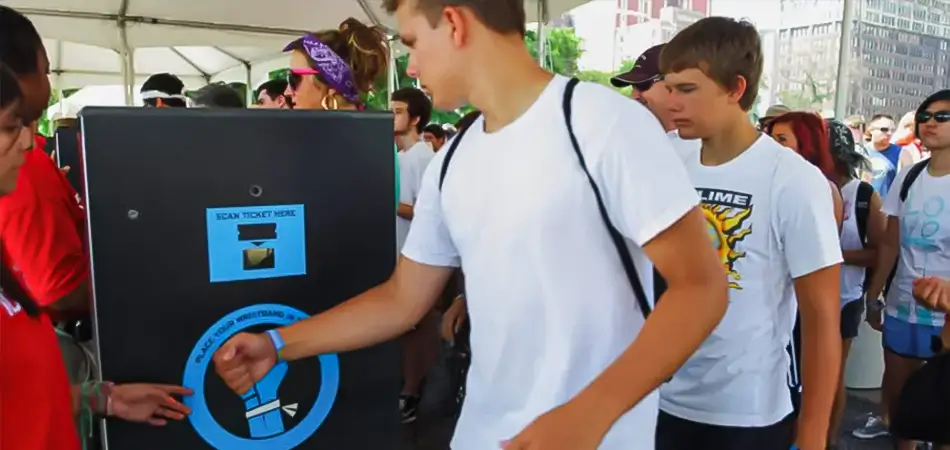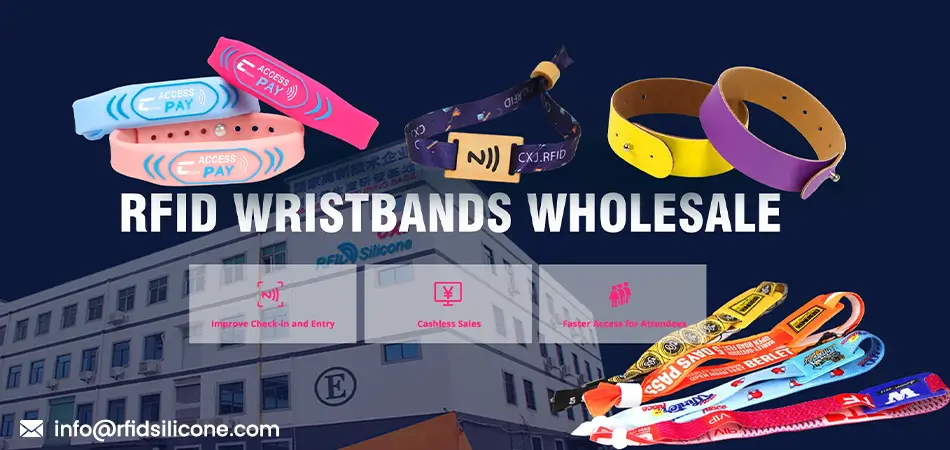In today's fast-paced world, theme parks are constantly seeking innovative ways to enhance visitor experiences while streamlining operations. One such technology that has revolutionized visitor management in theme parks is Radio Frequency Identification (RFID) wristbands. These wristbands utilize cutting-edge technology to provide numerous benefits for both theme park operators and visitors alike. Let's delve into the five key advantages of RFID wristbands for theme park visitor management.

Gone are the days of fumbling for paper tickets or scanning barcodes. RFID wristbands enable swift and seamless entry into the park with a simple tap or wave of the wrist. This not only reduces wait times at entrances but also enhances security by efficiently managing access control. Theme park operators can easily monitor and regulate visitor flow, ensuring a smoother experience for everyone.
RFID wristbands serve as convenient digital wallets, allowing visitors to make cashless transactions throughout the park. Whether purchasing tickets, food, merchandise, or souvenirs, visitors can simply tap their wristbands at designated terminals, eliminating the need to carry cash or credit cards. This frictionless payment system not only enhances convenience but also minimizes the risk of loss or theft.
By integrating RFID technology into wristbands, theme parks can offer personalized and interactive experiences to their visitors. These wristbands can be programmed to trigger special effects, unlock exclusive content, or even interact with attractions, creating memorable moments for guests of all ages. Whether it's unlocking a hidden surprise or earning virtual rewards, RFID wristbands add a layer of excitement to the overall guest experience.
From managing inventory to tracking visitor preferences, RFID wristbands enable theme park operators to streamline various aspects of their operations. Real-time data collected through these wristbands can provide valuable insights into visitor behavior, allowing operators to optimize staffing, inventory levels, and ride capacities accordingly. This data-driven approach enhances operational efficiency, ultimately leading to cost savings and improved guest satisfaction.
RFID wristbands seamlessly integrate with smart technology systems, enabling theme parks to offer innovative services such as virtual queuing and personalized recommendations. By leveraging RFID data and advanced analytics, theme parks can optimize ride wait times, create personalized itineraries, and deliver targeted promotions to enhance the overall guest experience. This integration with smart technology ensures that theme parks stay ahead of the curve in today's digital age.
To sum up, there are obvious differences between PVC cards and PLA cards in terms of materials, application fields, service life and safety performance. Choosing a card that suits your needs can both improve usage efficiency and protect the environment.
Silicone: Silicone wristbands are one of the most popular choices due to their durability, flexibility, and comfort. They are water-resistant and suitable for long-term use, making them ideal for theme parks, water parks, and other outdoor venues.
Fabric: Fabric wristbands are typically made of polyester or nylon materials and are known for their softness and comfort. They are often used for events, festivals, and concerts where attendees may wear them for extended periods.
Plastic: Plastic wristbands are lightweight, waterproof, and durable, making them suitable for various applications, including theme parks, resorts, and hospitals. They can be made from PVC, vinyl, or polyethylene materials.
Vinyl: Vinyl wristbands are similar to plastic wristbands but are typically made from a thicker material for added durability. They are often used for multi-day events or situations where tamper-proof wristbands are required.
Paper: Paper wristbands are inexpensive and disposable, making them suitable for short-term use at events or venues where quick identification is needed. They are often used for admissions, concerts, and one-day events.
Tyvek: Tyvek wristbands are tear-resistant, water-resistant, and tamper-proof, making them suitable for one-time use at events, festivals, or amusement parks.
Leather: Leather wristbands offer a more upscale and stylish option compared to other materials. They are often used for VIP access or special events where a premium look and feel are desired.

These are just a few examples of the types of materials used for RFID wristbands, and there may be variations or combinations of materials available depending on specific requirements and preferences.
In conclusion, RFID wristbands offer a myriad of benefits for theme park visitor management, ranging from efficient entry and cashless transactions to enhanced guest experiences and streamlined operations. By embracing this cutting-edge technology, theme parks can elevate the visitor experience while improving operational efficiency, ultimately setting themselves apart in an increasingly competitive industry. As technology continues to evolve, RFID wristbands are poised to play an integral role in shaping the future of theme park management and guest engagement.

RFIDSilicone supports customization of RFID wristbands, NFC tags, RFID NFC cards, etc. You can contact us anytime!